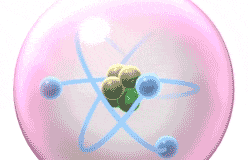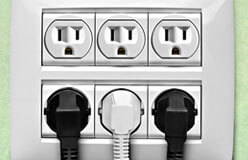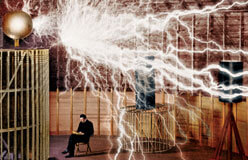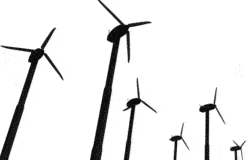There is only one type of electrical energy. But it is often split into two categories, static and dynamic.
The Greek scientist Thales (640–546 B.C.) gets credit for recognizing electrical effects first. In an experiment, he rubbed amber against silk. This caused nearby lightweight objects, such as feathers, to move toward the amber and cling to it. Here’s why it happened.
Normally, objects contain an equal number of positive (+) and negative (–) electric charges, which cancel each other out. But by rubbing the amber, electrons are transferred from atoms in the silk to atoms in the amber, giving the amber a negative charge. When the amber is held above a feather, its negative charges repel the feather’s negative charges, causing them to move onto the ground the feather was touching—and the feather becomes positively charged. Objects with the same charge (both negative, for example) repel each other. Objects with opposite charges attract. If the attraction is strong enough, the positively charged feather will move toward the negatively charged amber.
What Thales did was show static electricity in action. In fact, the word electricity comes from the Greek word for amber.
The electricity we use to light and heat our homes and run our appliances is not static electricity. It is dynamic electricity. Dynamic electricity refers to a steady flow of electrons between places and things. It needs a conductor through which to flow. A conductor is a substance, such as copper, that lets electrons pass freely through it. An energy source, such as a battery or generator, starts the electrons moving.







